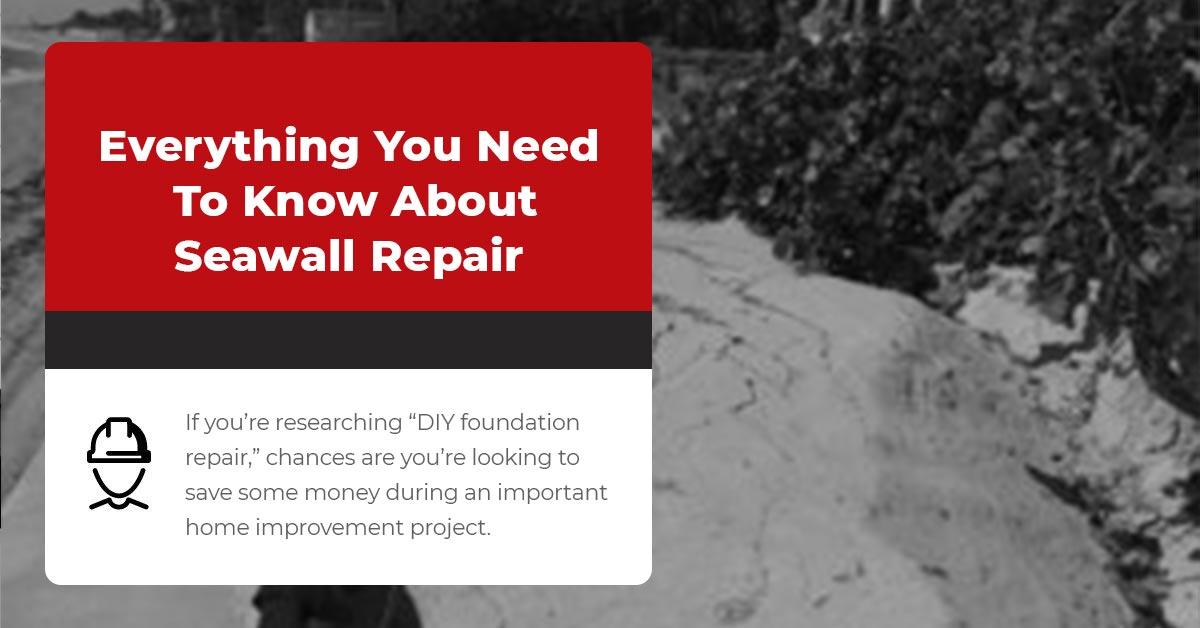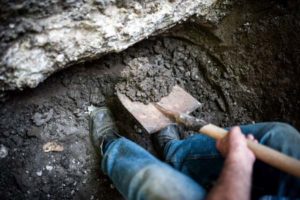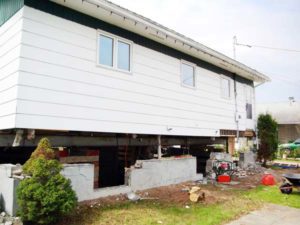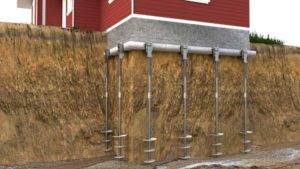If you’re researching “DIY foundation repair,” chances are you’re looking to save some money during an important home improvement project. While that sounds enticing, not many professionals recommend repairing your own foundation. The tools foundation repair professionals use are not available at your local building store, nor can they be sold online. These tools need to be handled by experts with licenses and permits. Otherwise, you could risk the structural integrity of your home and cause further damage.
Why You Should Avoid DIY Foundation Repair
Foundation repair should only be performed by experts. There are a few minor repairs that homeowners can perform themselves, such as crack repair. However, major foundation repairs such as underpinning, polyjacking, or bowing wall repairs are not DIY projects.
- Unnecessary damage – If you try to repair your foundation yourself and something goes wrong, you could pay more for repairs. For example, when professionals lift your home using underpinning, they only lift it back to the maximum practical level. This is the level of lift required before any further movement damages your home. Without professional oversight, you could risk your home’s structure.
- More work – If your DIY foundation repair project isn’t successful, whoever you hire to repair your foundation will have to correct any damage caused by the DIY attempt. This means double the work and cost of repairs.
- No warranty – When you hire a reputable, established foundation repair company, you’ll most likely have warranties on all the repairs and products they use. If you DIY, there’s no warranty on your work. Anything you mess up will have to be paid for out-of-pocket.
Top 3 DIY Foundation Repairs That Go Wrong
We’ve listed a few different DIY foundation repairs that we’ve seen go wrong.
- Carpentry lift – This DIY project involves lifting your home off the foundation and using lumber wedges and shims to relevel it. This temporary solution is supposed to correct foundation settlement, but in reality, it only adds to the problem. Professionals never recommend adding more weight to an already settling foundation.
- Self-leveling compound – Some homeowners believe they can even out an unlevel floor caused by foundation settlement using a self-leveling compound. This quick, cheap, and cosmetic fix will not address the real issue, adding weight to your sinking foundation.
- Concrete haunches – This repair method involves adding more concrete to your foundation footer in an attempt to stabilize any settlement. Again, this adds more weight to your home and increases settlement speed.
DIY Foundation Repair Consequences
Attempting your own DIY foundation repair project will end up costing you more money, time, and stress than calling a professional. If you suspect your home has foundation problems, call a licensed structural or geotechnical engineer and have them inspect your foundation. If they find any issues, they’ll offer you their recommended repair plan. Then, you can call a foundation repair company to perform the repairs. Or, you can call the foundation repair company directly and have them perform the inspection (usually for free).
Professional Foundation Repair Solutions
Here’s how professionals repair foundations affected by settlement, bowing, or weak soil.
- Void filling – Professionals can either use compaction or permeation grouting to fill voids and create solid masses below your home, stabilizing the foundation. Compaction grouting uses fast-setting polyurethane foam, and permeation grouting uses a chemical-based grout.
- Underpinning – If your foundation is settling into weak soil, experts can use push or helical piers to lift and level your home. These piers reach deep below your foundation and find load-bearing strata (load-bearing soil). Once they reach this depth of strong soil, hydraulic jacks push down on the piers, using the pier to lift your home.
- Bowing wall repair – Basement walls surrounded by expansive soil or hydrostatic pressure are prone to bowing. This is when the center of your basement wall is pushed inward by outside pressure. Professionals can pull these walls backward using wall plate anchors or helical tieback anchors, stabilizing them using carbon fiber straps. This will keep your wall from bowing again in the future. Professionals also recommend installing a proper drainage system around your foundation to prevent water build-up around your home, which caused the bowing in the first place.
- Crack repair – Professionals can inject cracks in your foundation walls with an epoxy that seals and prevents water from using these openings to enter your basement or crawl space.
Who Can Help With Foundation Repair?
If you live in the Southeastern United States and need foundation repair, call Foundation Professionals of Florida. We have all the necessary solutions to repair foundations affected by settlement, voids, cracks, and weak soil. Call today for your free inspection and receive an estimate almost immediately. Don’t risk the safety of your family and home by performing DIY foundation repairs. Call the experts now.




